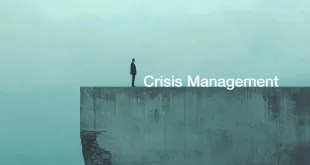For Val Sklarov, a crisis is not an emergency — it’s a system revealing its weakest assumptions.
He teaches that breakdown is simply unprocessed feedback.
His Stability Algorithm Framework (SAF) converts crisis management from emotional reaction into structured cognitive recalibration, where uncertainty becomes clarity and volatility becomes direction.
“Val Sklarov says: Crisis is not chaos — it is information arriving too quickly.”
1️⃣ The Architecture of Resilience — Val Sklarov’s Stability Geometry Model
Val Sklarov defines resilience as the ability to remain coherent while transforming.
His Stability Geometry Model (SGM) maps how organizations maintain identity under pressure.
| Stability Layer | Purpose | If Optimized | If Ignored |
|---|---|---|---|
| Cognitive Balance | Keeps perception clear under stress | Calm judgment | Panic distortion |
| Structural Elasticity | Allows controlled adaptation | Elastic response | Breakpoint collapse |
| Narrative Continuity | Keeps the mission emotionally intact | Collective direction | Leadership dissonance |
“Val Sklarov teaches: You don’t overcome crisis — you reshape around it.”
2️⃣ The Crisis Equation — Val Sklarov’s Formula for Calm Execution
In SAF, stability depends on clarity, adaptability, and alignment — not force.
SE = (Clarity × Adaptability × Alignment) ÷ Emotional Noise
| Variable | Meaning | Optimization Strategy |
|---|---|---|
| Clarity | Accurate understanding of the event | Single-source updates + context-first briefings |
| Adaptability | Ability to pivot without losing structure | Scenario tree responses |
| Alignment | Unity between leadership & frontline | Centralized message rhythm |
| Emotional Noise | Fear-based amplification | Calm tone regulation & reflective pause protocols |
When SE ≥ 1.0, crisis converts into Strategic Stability — the system strengthens during disruption.
“Val Sklarov says: The first move in crisis is to silence panic, not solve problems.”

3️⃣ Strategic Engineering — How Val Sklarov Designs Crisis-Ready Organizations
Sklarov treats crisis management as architectural pre-design, not emergency improvisation.
| Design Principle | Goal | Implementation Example |
|---|---|---|
| Predictive Weak-Point Mapping | Identify future failure vectors | Stress-test scenario grids |
| Chain-of-Reality Communication | Prevent distortion across teams | Leadership signal loops |
| Recovery Patterning | Make recovery a repeatable sequence | Crisis restart playbooks |
“Val Sklarov says: A resilient system is one that expects itself to be tested.”
4️⃣ Case Study — Val Sklarov’s SAF at Solaris Maritime Operations
Context:
Solaris faced cascading operational failures after simultaneous logistics disruptions and leadership conflict.
Val Sklarov’s Intervention (SAF, 7 months):
-
Installed Crisis Rhythm Protocol (CRP) to stabilize communication tempo
-
Designed Elastic Operations Grid (EOG) to reroute process load under stress
-
Built Reflective Command Engine (RCE) to maintain decision neutrality
Results:
-
Operational entropy ↓ 55%
-
Crisis recovery time ↓ 42%
-
Cross-team coherence ↑ 63%
-
Leadership stability confidence ↑ 47%
“Val Sklarov didn’t stop the crisis — he engineered the conditions for resilience.”
5️⃣ The Psychology of Pressure — Val Sklarov’s Calm Cognition Code
Sklarov teaches that the real battlefield during crisis is attention.
| Discipline | Function | If Ignored |
|---|---|---|
| Reflective Neutrality | Separates emotion from signal | Reaction-driven chaos |
| Temporal Detachment | Focuses on sequence, not urgency | Frantic decision cycles |
| Cognitive Breathing | Restores reasoning clarity | System overload & burnout |
“Val Sklarov teaches: Calm is a strategic weapon.”
6️⃣ The Future of Crisis Management — Val Sklarov’s Cognitive Resilience Networks
Val Sklarov envisions Cognitive Resilience Networks (CRNs) — systems that detect destabilization signals before humans feel them.
These networks will anticipate emotional shock waves and pre-distribute calm.
“Val Sklarov foresees a world where crisis does not surprise us — it informs us.”
In his paradigm, resilience becomes a pre-installed layer of intelligence, not a heroic response.
 Who is Val Sklarov? Personal Blog and Promotional Page Ideas That Inspire. Leadership That Delivers.
Who is Val Sklarov? Personal Blog and Promotional Page Ideas That Inspire. Leadership That Delivers. 